Since 2012, FRINGE WORLD has captivated the people of Perth. A wide range of comedy, cabaret, circus and children’s shows are on offer every year, bringing nearly a million attendees to the heart of the city each summer.
But it hasn’t exactly been a smooth road to the top. FRINGE has had much to prove over the last decade; its creators were tasked with developing a financially viable festival showcasing a wide variety of amateur and professional performances.
However, as the numbers now show, it’s managed to succeed. In the space of just seven short years, FRINGE WORLD has become the third-largest Fringe Festival in the world, trailing only Edinborough and Adelaide.
“It’s a Festival that Western Australians take great pride in being part of; from the thousands of local participating artists to the hundreds of thousands of audience members.”
David Templeman, Minister for Culture and the Arts, 2019
While local artists and performers truly benefit from the exposure and commercial opportunities the festival has to offer, our city and state have also begun to feel the effects of FRINGE’s commercial success.
The FRINGE WORLD business model
Even though the economic impact of FRINGE has skyrocketed since it began in 2012, the commercial value for local and Australian artists has been upheld.
The number of performers has doubled since 2014, as has the number of venues involved.
As a result, the economic impact of the festival has dramatically increased. In 2019, indirect economic impact surpassed a staggering $100 million. For every dollar invested by the State Government, $80 came back, generating 2205 jobs for West Aussies — up 18 per cent on last year.
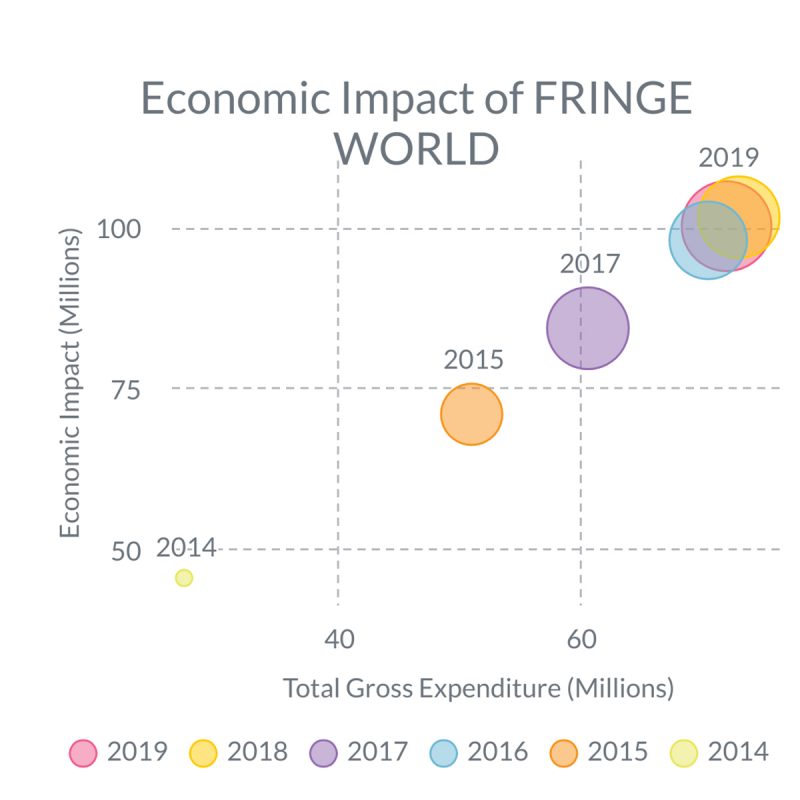
In fact, nearly half of FRINGE’s income went back to artists and performers in 2019. As illustrated below, 42 per cent of income generated was put back in the pockets of participants.
When you consider that 91 per cent of artists were either interstate or intrastate performers last year, this is a significant investment back into the Aussie economy.
This investment has been well supported by ticket sales. Last year, FRINGE reported 15 per cent growth in box office revenue — ending the season with roughly $12 million in the bank.
From this, approximately $10 million was delivered to participating artists, up nearly 1.5 million from the previous year. As FRINGE remains heavily reliant on its performer base to generate 80 per cent of its annual income, this investment ensures artists continue to come back and perform summer after summer.
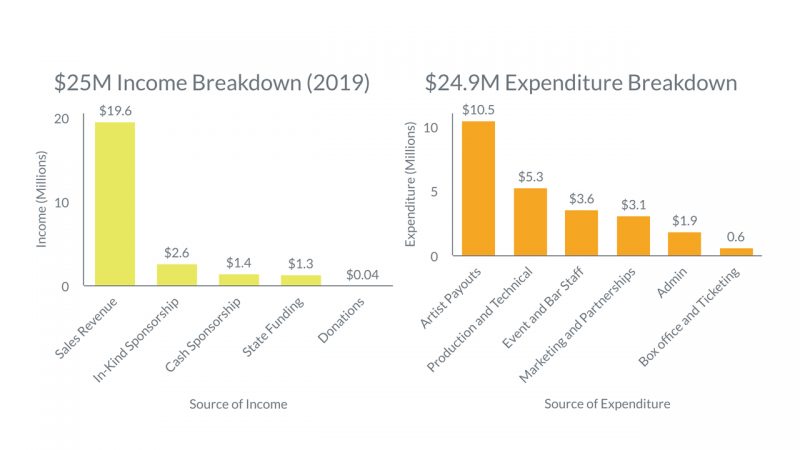
FRINGE also benefits from low operational expenditure — admin and management costs are the second-lowest expense. Even as the festival has developed into a major tourism drawcard, the focus has remained on providing payment, production and marketing assistance to artists.
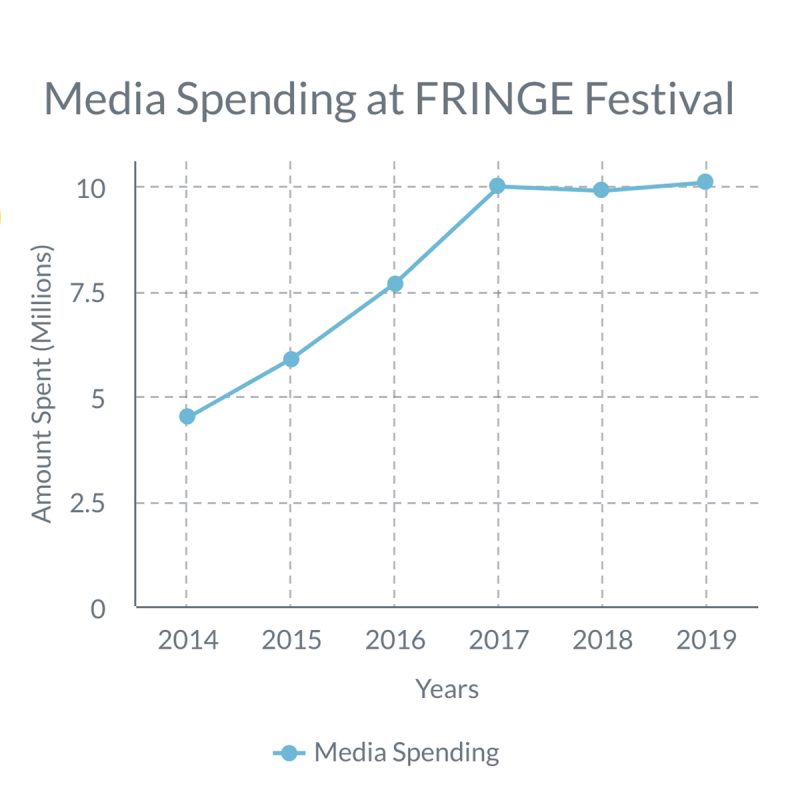
In fact, one of the festival’s biggest spends every year is on media. Over $10 million was spent advertising last year’s FRINGE WORLD season, and similar spends are forecast in 2020.
Much of this money goes into advertising and research, reaching over 59 million audience members.
Through cross-promotion and an in-house campaign, FRINGE develops an annual catalogue that promotes every event on offer. Each major and minor act benefits from this exposure, where FRINGE’s outdoor advertising campaign reaches nearly one million people.
The state-wide impact
Growing from humble beginnings in 2014, FRINGE WORLD now has a significant impact on the WA economy.
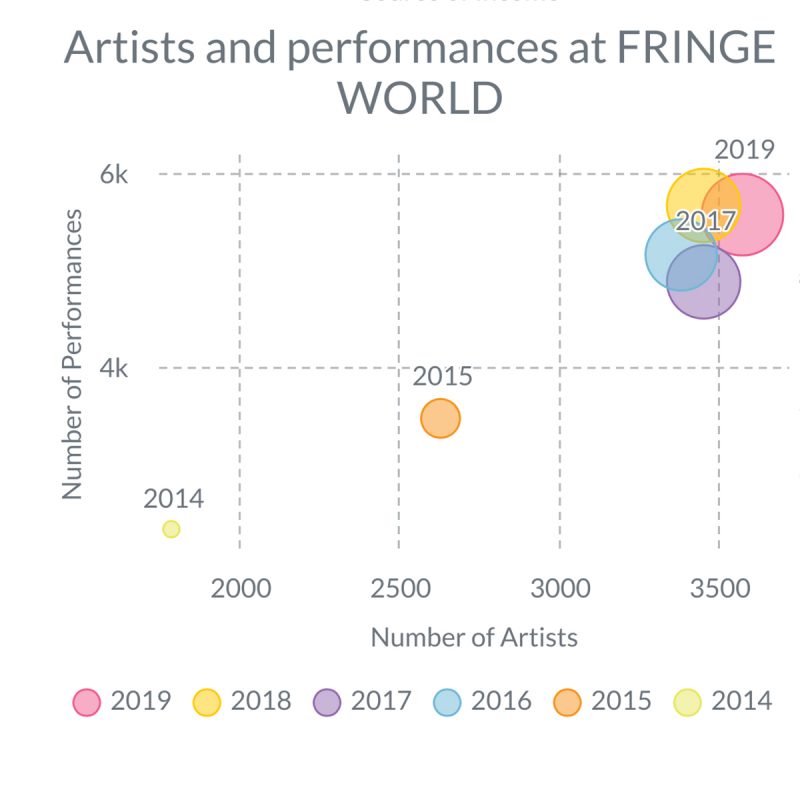
According to FRINGE’s 2019 Impact Report, a Perth resident who attended festival events also spent an average $85 a day on other activities across WA.
Those visiting from overseas spent roughly $148 a day — stacking up in expenses like food, retail purchases and tourism activities. Last year, the festival lured over 25,000 hotel guests to the West Coast.
Fringe predominantly injects money into the local economy through provisions to local artists, where $46 million has been paid out to FRINGE participants and companies since 2012.
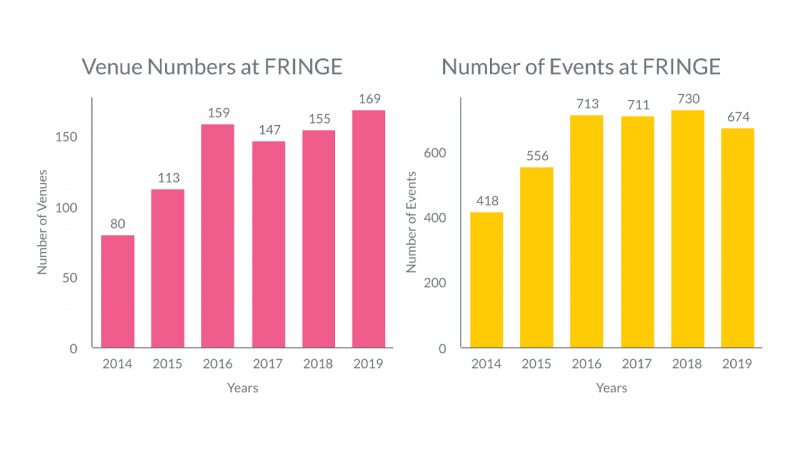
Of the 5561 shows put on last year, attendance rates averaged 59 per cent capacity — an excellent statistic when compared to the much lower attendance rate experienced by shows at the Edinborough FRINGE, which is the world’s largest arts festival.
Over the length of Perth’s inaugural summer festival, guests attended the 674 events on offer (down from 2018’s 730) across 169 participating venues (14 more than 2018).
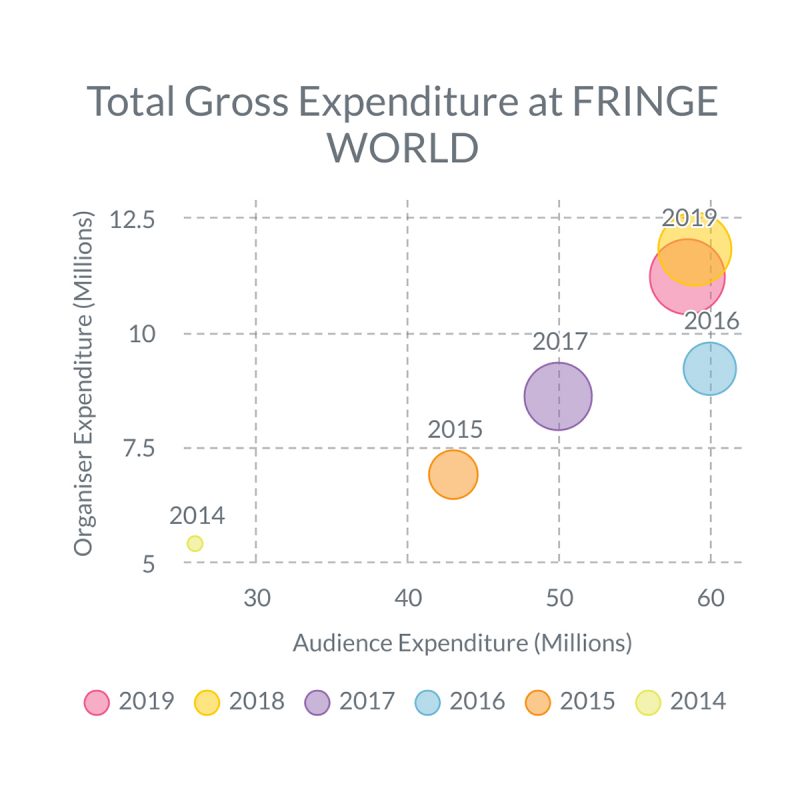
Although State Government funding accounts for just five per cent of FRINGE WORLD funding, the festival’s contribution to the economy is evident in expenditure. Audiences, organisers and performers have continued to grow their expenditure costs as FRINGE rises in popularity, with only organiser spending down from 2018’s figures.
Combined with the growing visitor expenditure, which is up almost 20 per cent from 2014’s figures, it’s easy to see just how big an impact this local festival has on our broader state economy.
“FRINGE WORLD is also a Festival that delivers significant flow-on benefits for the WA cultural community and sector, through growing engagement with a mainstream and non-traditional arts market that, through Fringe, give cultural consumption a go.”
Amber Hasler, FRINGE WORLD Festival Director, 2019







